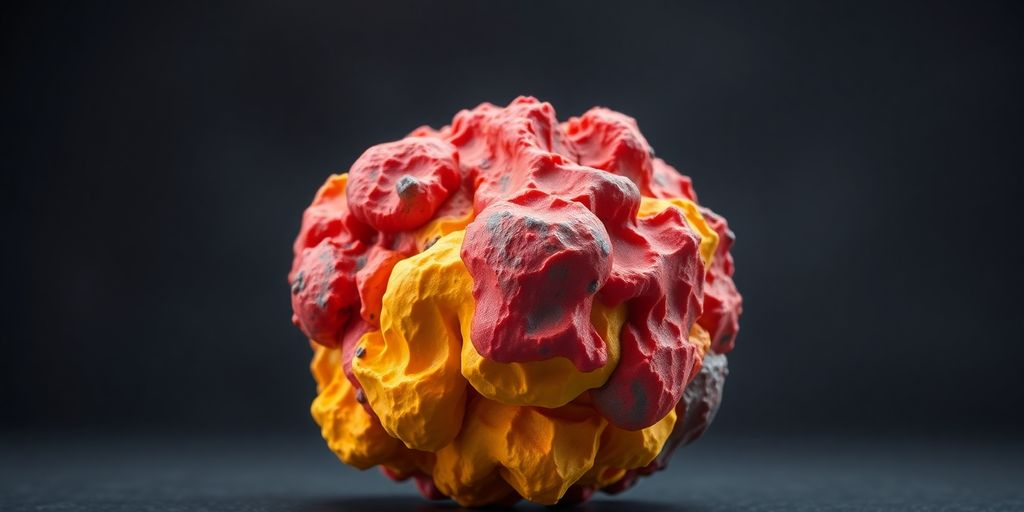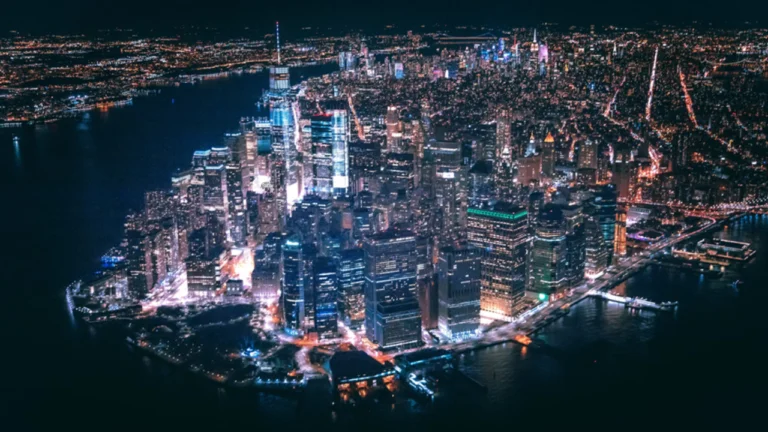Exploring the Latest AI Tools for Instant Image-to-3D Conversion
Neural Radiance Fields for Realistic Scene Representation
Neural Radiance Fields, or NeRFs, are a game-changer in how we represent 3D scenes. Think of it as teaching a computer to understand a scene not just by its surfaces, but by how light behaves within it. A NeRF model takes a collection of 2D images of an object or environment, along with information about where each photo was taken, and learns to reconstruct a continuous, volumetric representation of that scene.
With image to 3d model AI solutions, NeRF-based methods can turn ordinary image sets into photorealistic, fully navigable 3D models with remarkable precision.
This allows for incredibly realistic renderings from any viewpoint, making it a powerful tool for creating detailed 3D models from simple image sets. The core idea is to predict the color and density of any point in 3D space, effectively creating a photorealistic digital twin.
This technology is key to achieving lifelike 3D outputs. It’s a significant leap from older methods that relied on explicit geometric meshes. The ability to capture intricate details and lighting effects means that the resulting 3D models are not just shapes, but immersive representations. The process involves training a neural network to output color and density for any given 3D coordinate and viewing direction. This allows for novel view synthesis, meaning you can see the scene from angles you never actually photographed.
Multi-View Generation for Accurate 3D Reconstruction
Multi-view generation is another foundational technology that powers many image-to-3D AI tools. The principle here is straightforward: by analyzing multiple 2D images of an object taken from different angles, AI can infer its three-dimensional structure. This process is akin to how humans perceive depth and shape by looking at something from various perspectives. The AI algorithms analyze the correspondences between features in different images to build a coherent 3D model. This approach is particularly effective for creating accurate geometric reconstructions.
This method is vital for generating precise 3D models without needing complex manual input or expensive 3D scanning equipment. The more views provided, and the better the quality of those views, the more accurate the final 3D reconstruction will be. It’s a robust way to capture the form and dimensions of an object. The AI essentially stitches together the visual information from each angle to form a complete digital representation.
Text-to-3D Capabilities for Intuitive Creation
Text-to-3D capabilities represent a more intuitive approach to 3D asset creation. Instead of relying on input images, users can simply describe the object they want in natural language. The AI then interprets this text prompt and generates a corresponding 3D model. This technology often uses large language models and diffusion techniques to translate textual descriptions into visual 3D forms. It democratizes 3D creation, making it accessible even to those without prior 3D modeling experience.
This innovation significantly lowers the barrier to entry for 3D content creation. Imagine typing “a vintage armchair” and having a detailed 3D model appear. The sophistication of these models depends heavily on the AI’s training data and its ability to understand nuanced descriptions. It’s a powerful way to quickly prototype ideas or generate assets based on conceptual input. The goal is to make the creation process as simple as writing a sentence, transforming imagination into tangible 3D assets.
Key AI Tools Revolutionizing 3D Asset Creation
NVIDIA Instant NeRF: Speed and Accuracy
NVIDIA’s Instant NeRF is a game-changer for rapid 3D scene creation. It excels at turning 2D images into detailed 3D representations with remarkable speed. This tool is particularly noted for its ability to process multiple views, which helps in reconstructing accurate geometry.
The core innovation lies in its neural radiance fields (NeRF) technology, allowing for quick scene capture and rendering. This makes it a powerful option for professionals needing fast turnaround times. The accuracy achieved by Instant NeRF means fewer iterations are often required, saving valuable project time.
Luma AI: Versatile Text and Image Input
Luma AI offers a flexible approach to 3D asset generation, accepting both text prompts and image inputs. This versatility makes it accessible to a wider range of creators, from those with specific visual references to those who prefer to describe their desired objects. The platform aims to simplify the process of bringing ideas into the third dimension.
Luma AI’s strength is its user-friendly interface combined with robust AI capabilities. It allows for the creation of 3D models from simple descriptions or existing images, streamlining workflows significantly. This tool is great for quickly prototyping ideas or generating assets for various applications.
TRELLIS 3D AI: Professional Asset Generation
TRELLIS 3D AI focuses on professional-grade 3D asset creation, particularly for those who need high-quality outputs from image inputs. It’s designed to handle the complexities of professional workflows, ensuring that the generated 3D models are detailed and suitable for demanding projects. The platform supports multiple output formats, which is a big plus for integration into existing pipelines.
This tool is built for creators who require precision and detail. TRELLIS 3D AI’s ability to maintain structural integrity from source images makes it a reliable choice for professional Image to 3D asset conversion. It’s a solid option for generating assets that need to look good and function correctly in various applications.
Industry Leaders and Emerging Platforms in AI 3D Generation
Shap-E by OpenAI: Innovative Text-to-3D
OpenAI’s Shap-E is making waves with its ability to generate 3D models directly from text descriptions. This tool simplifies the creative process, allowing users to describe an object and have an AI 3D model generator bring it to life. It’s a significant step forward for intuitive 3D asset creation, making complex modeling accessible to a wider audience. The speed and quality of output from Shap-E are particularly noteworthy for those looking to quickly prototype ideas.
The ability to translate simple text into tangible 3D assets is a game-changer for rapid ideation and content creation.
This approach to AI 3D model generation is changing how we think about digital asset creation. It’s not just about speed; it’s about democratizing the tools so anyone can create. The focus is on making the technology user-friendly, which is a big deal for many industries.
Meshy AI: Versatile Text and Image Input
Meshy AI stands out with its flexible input options, accepting both text prompts and existing images to create 3D models. This versatility makes it a powerful tool for a variety of projects, from game development to product visualization. Users can refine existing designs or start from scratch with just a few words. Meshy AI is a prime example of how AI 3D model generation is becoming more adaptable.
- Supports text-to-3D generation.
- Enables image-to-3D conversion.
- Offers features for texture and animation.
The platform’s ability to handle different input types means it can cater to a broader range of user needs. Whether you have a clear visual reference or just a concept, Meshy AI aims to provide a solution. This adaptability is key in the fast-paced world of digital content creation.
Tripo AI: Streamlined 3D Model Creation
Tripo AI focuses on making the 3D model creation process as straightforward as possible. It’s designed for efficiency, allowing users to generate 3D assets with minimal effort. This tool is particularly useful for professionals who need to produce a high volume of 3D models quickly, such as for architectural visualization or e-commerce product displays. Tripo AI is a strong contender in the AI 3D model generator space for its ease of use.
| Feature | Description |
| Input Flexibility | Accepts images and text prompts. |
| Output Quality | Generates detailed 3D models. |
| Workflow Speed | Optimized for rapid asset generation. |
The emphasis on a streamlined workflow means that users can spend less time on the technical aspects of 3D modeling and more time on the creative vision. This efficiency is a major draw for businesses looking to cut down on production times and costs associated with traditional 3D asset creation.
Practical Applications of AI-Powered Image to 3D Conversion

AI tools that convert images to 3D models are changing how many industries work. They make creating 3D assets faster and easier than ever before.
Enhancing Product Visualization for E-commerce
Online stores can really benefit from this technology. Instead of just flat pictures, customers can see products from every angle in 3D. This helps shoppers make better decisions and can lead to fewer returns. AI image to 3D conversion makes product pages more engaging and informative. It’s a big step up from traditional product photos.
Accelerating Game Development Workflows
Game developers often need lots of 3D models. Using AI to turn concept art or photos into 3D assets speeds up this process a lot. This means developers can spend more time on gameplay and less on modeling. The ability to quickly generate assets from images is a game-changer for development cycles.
Visualizing Architectural and Interior Design Concepts
Architects and designers can use these tools to quickly create 3D models of buildings or rooms from sketches or photos. This helps clients understand the design better. It’s a great way to show off design ideas before any physical work begins. The accuracy of the AI image to 3D process is key here.
Benefits and Future Trends in AI 3D Model Generation
Significant Reductions in Design Time and Costs
AI 3D model generators are really changing how quickly things can be made. Think about it: what used to take days or weeks of manual work can now be done in hours, sometimes even minutes. This speed directly translates to lower costs for businesses. Companies are seeing design times cut by as much as 70%, and overall project costs can drop by half. This makes creating 3D assets much more approachable for everyone.
This efficiency boost is a big deal. It means smaller teams can do more, and larger companies can speed up their production pipelines considerably. The ability to quickly iterate on designs without massive time or financial investment is a game-changer. It’s not just about making things faster; it’s about making the whole process smarter and more economical. The impact of AI 3D model generation on project timelines and budgets is undeniable.
The rapid advancement in AI 3D model generation is democratizing 3D content creation, making it accessible to a wider audience than ever before. This shift is expected to fuel innovation across various industries.
Increasing Accessibility and Ease of Use
Gone are the days when you needed a degree in 3D modeling to create decent assets. Today’s AI tools are designed with user-friendliness in mind. Many platforms offer simple interfaces, often just requiring a text description or a few images to get started. This lowers the barrier to entry significantly, allowing artists, designers, and even hobbyists to bring their ideas into the third dimension without extensive technical training.
This increased accessibility means more people can experiment and create. Whether it’s for a personal project, a startup’s product visualization, or a game developer’s prototype, these tools make 3D creation less intimidating. The focus is on the creative idea, not just the technical execution. It’s about making the power of 3D modeling available to anyone with a vision.
Advancements in Realism and Interactivity
The future of AI 3D model generation is looking incredibly realistic and interactive. Technologies like Neural Radiance Fields (NeRF) are pushing the boundaries of how lifelike 3D scenes can be. These advancements mean that the 3D models created are not just visually accurate but can also be experienced in more dynamic ways. We’re moving towards 3D assets that feel truly present.
Beyond just looks, interactivity is becoming a key feature. Imagine 3D models that can be manipulated in real-time, respond to user input, or even simulate physical interactions. This opens up possibilities for more engaging product demonstrations, immersive gaming experiences, and interactive architectural walkthroughs. The evolution of AI 3D model generation is paving the way for richer digital experiences.
Getting Started with AI Image to 3D Tools
Exploring Free Trials and Accessible Platforms
Ready to jump into AI image to 3D conversion? Many platforms offer free trials, letting you test the waters before committing. This is a smart way to see which tools fit your needs best. Think about what you want to create – maybe it’s product visualization for e-commerce or assets for a game. Tools like Meshy AI and Luma AI often have free tiers or trial periods. These allow you to experiment with their image to 3D capabilities without upfront costs. It’s a great starting point for anyone curious about this technology.
Integrating AI 3D Generation into Your Workflow
Bringing AI image to 3D tools into your existing process doesn’t have to be complicated. Start small. Pick one project and see how an AI-generated 3D model can be used. Maybe you can replace a manually modeled object or speed up a part of your pipeline. Consider the output formats – do they work with your current software? Most tools provide common formats like OBJ or GLB, which are widely compatible. The key is to experiment and find where AI 3D generation adds the most efficiency.
Resources for Learning and Skill Development
Getting good with AI image to 3D conversion involves continuous learning. Many platforms provide tutorials, webinars, and community forums. These resources are goldmines for tips and best practices. You can learn from others who are already using these tools professionally. Look for guides on preparing your input images for the best results. Understanding how different AI models interpret images will help you get more accurate 3D outputs. Don’t be afraid to ask questions in forums; the community is often very helpful.
The Future of 3D Creation is Here
So, we’ve looked at some pretty cool AI tools that can turn flat images into 3D models. Things like NVIDIA’s Instant NeRF and tools from companies like Meshy AI and Luma AI are really changing how people create 3D stuff. It’s not just for big companies anymore; these tools are making it easier for everyone to get involved. We’re seeing faster design times and lower costs, which is a big deal. As this tech keeps getting better, expect to see even more amazing uses for it, from video games to how we shop online. It feels like we’re just scratching the surface of what’s possible with AI and 3D.






